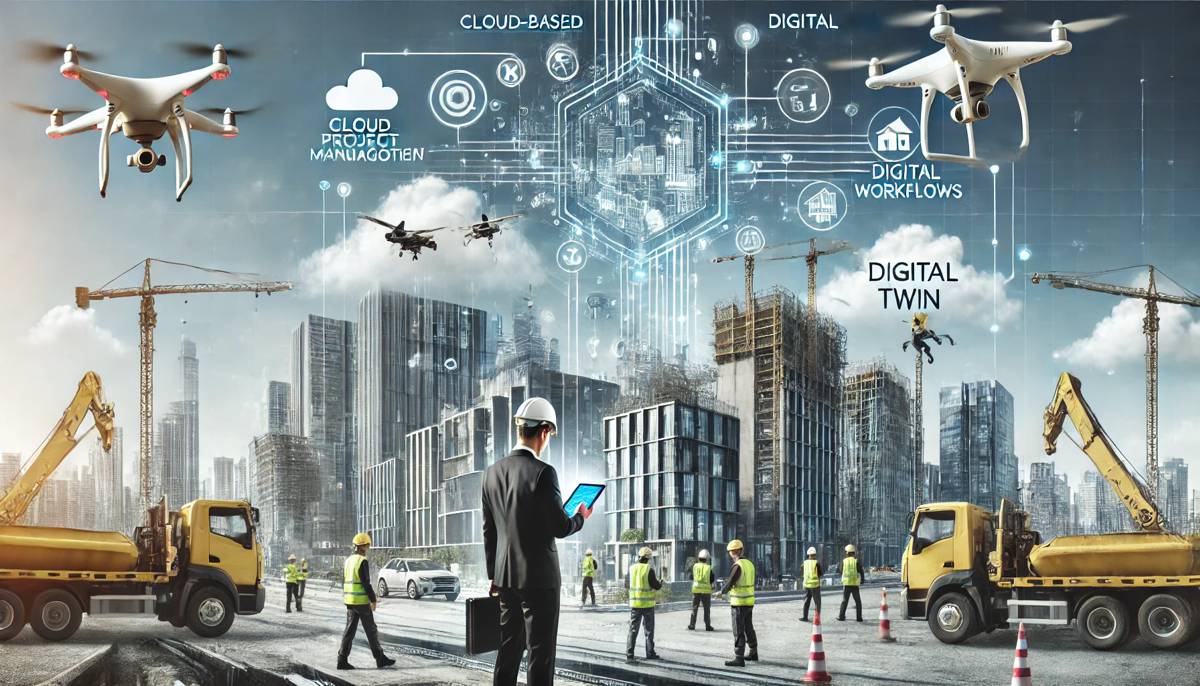The construction industry has always been about the construction of a strong foundation, not only for structures, but also for business success. One of the major pillars of success in construction is an accurate cost estimate. Without this, projects can withstand delays, budgetary or even complete failure. Traditionally, cost estimates depend much on manual calculations, spreadsheets and human decisions. But as the industry becomes more competitive and projects grow in complexity, the technology changes how companies complete this important process. Today, smart construction technologies are reshaped cost assessment, which provides new levels of accuracy, transparency and efficiency.
Change towards smart construction
Smart construction refers to the integration of modern technologies – such as automation, digital platforms and AI -in project management and execution. It’s not just about fast construction, but also about being smart. By taking advantage of innovative equipment, the construction companies are now able to streamline tasks, reduce the risk and maximize the return on investment. For example, digital platforms allow spontaneous collaboration between engineers, contractors, and customers, and ensures that everyone stays on the same page.
This innings also appears in areas like purchase, where special services like Hotel Procurement Services, Construction projects are running smoothly by supplying high-quality furniture, fixtures and equipment on time and within the budget.
Role of technology in cost assessment
Technology has revolutionized the way cost estimates are made. Instead of fully relying on human expertise, companies can now use software and digital platforms to obtain real-time data on physical costs, labor expenditure and project deadlines. Artificial Intelligence (AI) is being used to predict cost fluctuations, while cloud-based platforms enable teams to cooperate immediately at various locations. This means low errors, rapid approval and a better financial plan. More importantly, it allows the construction firms to present customers with accurate and transparent projections, which creates confidence and long-term relationships.
Building Information Modelling Power (BIM)
Information is the manufacture of modelling (BIM) among the most transformational devices in smart construction. BIM provides a digital representation of physical and functional aspects of a project, so that the teams can imagine the entire construction process before breaking the ground. From the discovery of potential clashes to estimation of necessary material and labor reduces BIM expensive surprises. By incorporating BIM, companies are reducing risks, avoiding work again, and eventually saving significant amounts of money. The cost estimate offers a clear and detailed breakdown that increases both planning and execution.
Data Analytics and Predictive Modelling
The data is at the centre of modern cost estimation. With the rise of large data, construction companies now have a huge amount of information about previous projects, market trends and material pricing. Using the future analytics, these companies can identify risks before they are and accordingly can adjust the project budget. For example, data analysis may predict potential delays due to dissolution or lack of labor, which can enable project managers to explain these factors in cost estimates.
Predictive modelling also helps customizing resource allocation, ensuring that each dollar is used effectively.
Automation and artificial intelligence
Automation and AI are no longer future concepts – they are practical solutions being implemented in construction today. Automatic equipment is now handling repetitive tasks such as volume takeoff, reporting and budget comparisons. AI algorithms analyze gigantic datasets to provide very accurate predictions on material costs, work requirements and project risk. These technologies reduce human errors, speed up the decision and allow project managers to focus on strategic functions.
It is also the place where the relevance of OS&E and FF&E becomes important, as the purchase operated by AI and digital tools helps to ensure that high-quality operating and presented elements are transformed efficiently, both budget estimates and projects align with the project deadline.
Stability and cost assessment
Another major region where technology is creating an impact is stability. The construction of green is no longer an alternative tendency, but a requirement. Cost assessment equipment now includes the ability to calculate the financial impact of durable materials, energy-skilled systems and environmentally friendly designs. Considering both the advanced costs and long-term savings of environmentally friendly solutions, technology ensures that stability and cost efficiency run by hand. This helps construction firms to meet regulatory requirements and attract customers who prefer environmentally responsible buildings.
Challenges in adopting smart construction technology
Although the benefits are obvious, adopting new techniques in cost estimation does not come without challenges. High early investment costs can prevent small firms, and the need for special training can slow down implementation. Some construction companies hesitate to move away from traditional methods due to complications or fears of potential data security problems. In addition, the integration of many technologies into a harmonious system can be a difficult process. Despite these challenges, however, long-term benefits in efficiency and accuracy relieve initial obstacles.
Future of cost estimate in construction
Looking forward, the future of cost estimation in construction is ready to be even more advanced. Emerging technologies such as promoted reality (AR), virtual reality (VR), and Internet of Things (IOT), will further enhance the accuracy and transparency of the blockchain process. The AR and VR Emarsiv project can provide visualization, while IOT devices can track materials and devices in real time. The blockchain can secure transactions and create transparent records of purchase and payment. This progress points to a future where the cost estimate will be completely automated, data-operated, and integrated at every stage of construction.
Conclusion
The construction industry is at a significant turn, where technology is no longer just a support tool, but a driving force behind clever, more efficient projects. Cost estimates, one of the most important aspects of construction, have been replaced by digital equipment, AI and data analytics. From improving accuracy to supporting stability, these technologies are shaping the future of how projects are employed and distributed. For companies embracing these innovations, the awards are clear: more efficiency, strong customer trust and more profitable results. The future of smart construction is here, and the cost is leading the estimated route.



































